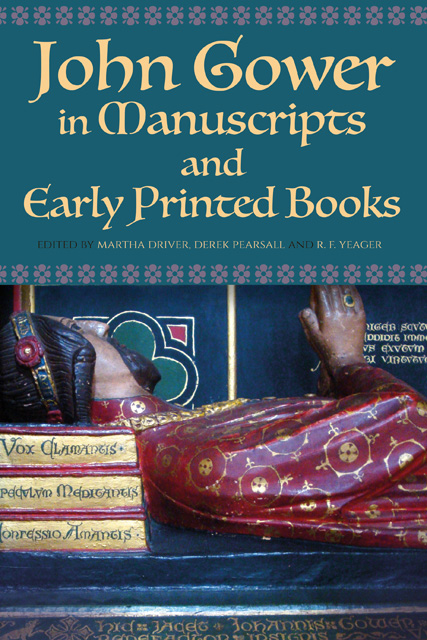12 - English Poets in Print: Advertising Authorship from Caxton to Berthelette
Published online by Cambridge University Press: 18 January 2023
Summary
Thomas Berthelette’s 1532 edition of the Confessio Amantis (STC 12143) is one of the important landmarks in the history of the printing of English literary authors, making available, in an impressive folio volume, the best-known work of one of the poets who, in Skelton’s words, “first garnisshed our Englysshe rude.” Appearing in the same year as William Thynne’s folio edition of The workes of Geffray Chaucer (printed by Thomas Godfray: STC 5068), Berthelette’s Confessio took its place among a succession of printed titles whose publishers seem to have been especially concerned to construct and promote a history of poetry written in English, and (in Gower’s words) “for Engelondes sake.” Such concern was manifest not only in the publishers’ choice of works to print but also in the varieties of paratextual apparatus with which the chosen works were set forth. Thynne opted for a preface addressed “To the kynges hyghnesse” as the primary means of establishing the credentials of his edition of Chaucer’s works. Berthelette, who was both editor and printer of the 1532 Confessio Amantis, followed suit with a dedication to Henry VIII (whose service he had joined as King’s Printer early in 1530) and some other prefatory gestures. These two dedications are instances of the kinds of printed paratextual material that has come to attract some attention, particularly in relation to Chaucer and Lydgate, and to the varieties of cultural capital to be claimed by making their works newly available in print. Other forms of paratextual experiment have been highlighted in early printed editions of Skelton’s works, where the significance of elements such as printed annotations and woodcuts to the construction of authorial presence has been noted. Gower’s early existence in print has not gone unmarked, but while Berthelette’s 1532 edition of the Confessio Amantis has been the subject of valuable recent studies, less has been said about the extent to which the construction of “Gower as author” in this book might reflect the larger landscape of authorial promotion during the later fifteenth and early sixteenth centuries. The discussion that follows here will attempt to situate the 1532 Confessio in that landscape, outlining some of the forms of attention given to authorship in English books printed before 1532, and concentrating especially on discernible continuities and innovations in the printing of poetry in English.
- Type
- Chapter
- Information
- John Gower in Manuscripts and Early Printed Books , pp. 219 - 230Publisher: Boydell & BrewerPrint publication year: 2020



